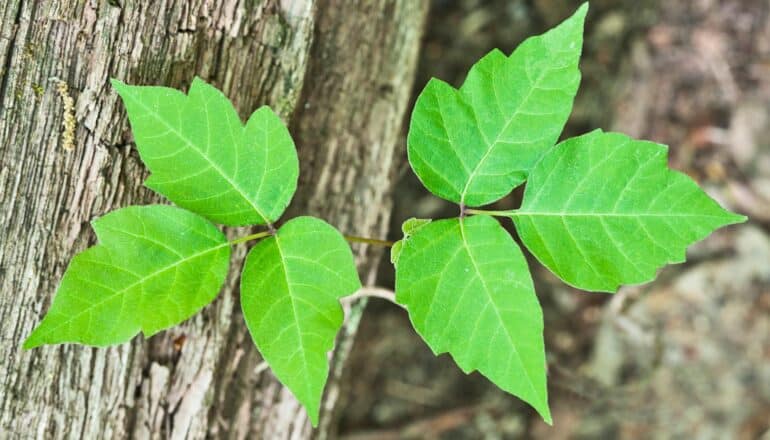
Researchers found that poison ivy leaves show a lot of variability that likely makes accurate identification more difficult and significantly undermines a longstanding avoidance strategy.
Therefore, there is an ongoing need to develop preventive medical procedures to prevent poison ivy rash that do not depend on plant identification.
We’ve all heard the classic saying “leaves of three, let it be.” But just how accurate is that timeless phrase?
While this specific mnemonic device exists to deter people from touching poison ivy, it turns out there are also many harmless three-leaf native plants. How is one to tell the difference between itchy poison ivy and those harmless three-leaf native plants?
Unfortunately, accurate identification is quite challenging because poison ivy does not hold true to form.
“Based on the research, poison ivy had enormous amounts of leaf variation,” says John Jelesko, associate professor in the School of Plant and Environmental Sciences at Virginia Tech. “There was no clear poison ivy look. It was quite astonishing, especially since the data set included poison ivy plants from all over the geographic United States.”
The researchers used approximately 2,000 photos submitted to iNaturalist.org to compare leaf shape variability across the United States.
The research began during the height of the COVID-19 pandemic, when there was a rash of poison ivy diagnoses from people exploring the outdoors. A project such as this was also a fantastic way for undergraduates to continue research projects during the pandemic.
Kyla Thompson, Noah Magerkorth, Elizabeth Verteramo, and Hannah Becker, former undergraduates in the department within the College of Agriculture and Life Sciences as well as Joy G. Flowers from the College of Science also worked on the project. Jyotishka Datta, assistant professor in the statistics department, and Jordan Metzgar, Herbarium curator in biological sciences, also helped make the study possible.
The records from iNaturalist for poison ivy and American hog peanut, a three-leaflet plant commonly confused with poison ivy, were analyzed for seven attributes related to the shape of their compound leaves. These attributes were used to calculate a total leaf complexity score.
It was found that the average and the range of the total leaf complexity scores for poison ivy were significantly higher than those for American hog peanut, which had minimal variability. Further analyses confirmed that the spread of poison ivy’s leaf shape variability was much greater compared to American hog peanut. Additionally, researchers examined a specific poison ivy specimen, characterized by often producing palmate penta-leaflet compound leaves.
The total leaf complexity of poison ivy showed a high degree of variation across its native range in North America. Despite this variability, there was a noticeable, but small, trend of increasing total leaf complexity in poison ivy from east to west. More serrated edges might appear on the leaves further west.
Poison ivy plants with five leaves were also identified in the study. Just to make things even more confusing: the five-leaflet poison ivy plants came in two orientations: pinnate and palmate compound leaves. The palmate, or palm-like, five-leaflet poison ivy specimen was found to be significantly correlated with a random, multipart process in the development of its leaflets. Geographic clusters were not seen.
“Whatever this [variable leaf shape] phenomenon is, it is widespread and inherent to the plant,” Jelesko says. “Our ultimate recommendation is that avoidance by identification is not going to work well because the basic step of identification is problematic at best.”
What could help with poison ivy plant identification? Training an artificial intelligence model to account for the large variability of leaf shape, Jelesko says.
He adds that if you can’t identify poison ivy, the next best way to avoid it is by wearing protective clothing and by cleaning any potentially exposed area thoroughly with soap and water.
The research appears in the journal Plants People Planet.
Funding for the research came from a US Department of Agriculture Hatch Grant administered by the Virginia Agriculture Experiment Station.
Source: Virginia Tech
The post ‘Leaves of three’ isn’t true for all poison ivy appeared first on Futurity.
from Futurity https://ift.tt/14uny0R
No comments:
Post a Comment